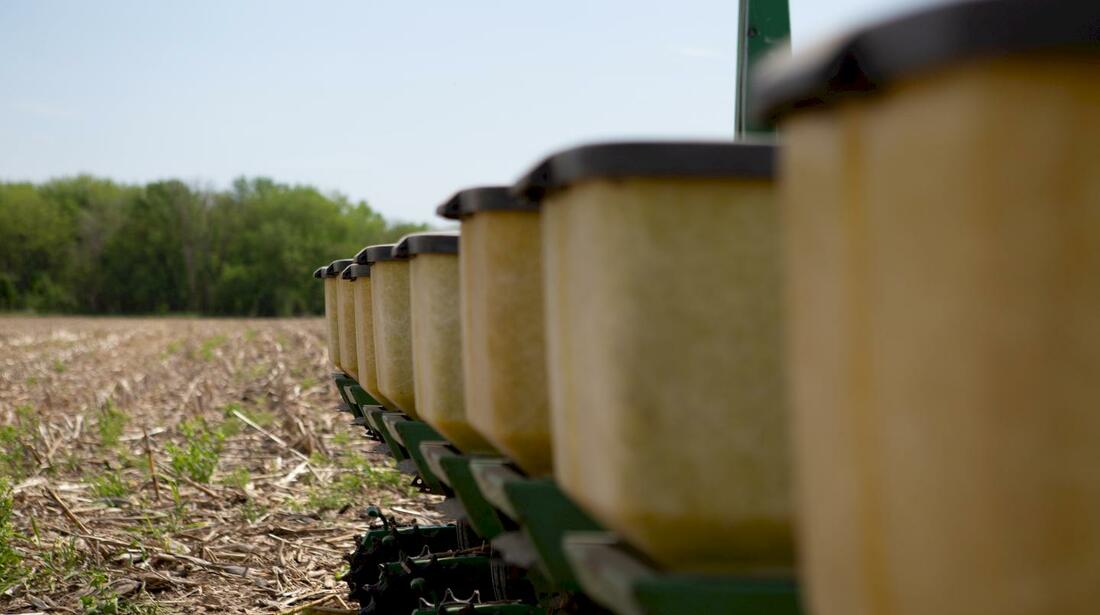Tuesday marked the first day of spring. As temperatures continue to rise, don’t be tempted to change up your planting plan without careful consideration. Even if one field is ready before another, product recommendations are purposeful, and planting shouldn’t be rushed.

“While there are some benefits of early planting, you never want to sprint to be the first in the field,” says Bill Kessinger, technical agronomist for Stine®. “Mother Nature can turn in an instant, leaving crops susceptible to chilling and unfavorable soil conditions. Patience is critical this time of year.”
Dangers of planting too early
Planting early can put crops at risk for issues like imbibitional chilling, uneven emergence or sidewall compaction. Each limits the crop’s ability to thrive and produce a viable root structure to support a healthy plant.
Corn and soybeans can be affected differently if not planted into an ideal seedbed. Corn takes approximately 90–120 growing degree days (heat units) for a plant to emerge, but that all depends on soil moisture and temperatures. Typically, corn needs a consistent temperature of 50 degrees Fahrenheit and good soil moisture to encourage germination and even emergence.
“If corn sits in the ground longer than it should, the plant is forced to live off the energy and nutrients stored in the seed, which doesn’t allow for a good start. This can impact the crop during the early vegetative stages and weaken its root structure in the long haul,” says Tony Lenz, Stine technical agronomist.
Specifically, if corn receives cold moisture within 48 hours of planting, it can disrupt the germination process as it imbibes 30% of its weight in water before it germinates. This is called imbibitional chilling. It can lead to issues with the developing embryo, including corkscrew effect of the mesocotyl, which can result in the death of the seedling.
Soybeans are also susceptible to chilling injury as the cool temps can affect the seed coat, or the protective layer of the soybean. While soybeans are better equipped to handle chilling, it can cause uneven or delayed emergence.
Product allowances
Agronomists work hard to help put the right product on the right field. Product recommendations are intentional and require specific conditions and growing degree days to achieve their maximum yield potential.
“Stine agronomists and research experts spend years studying the products we place in growers’ fields,” says Lenz. “We know firsthand the best conditions for optimal growth and carefully help our growers select the right fit for their field. But what we can’t account for is when growers do not plant within the timeline or in conditions recommended for that specific product.”
Whether you’re considering planting early or late, consult with your local Stine sales rep or agronomist to see how timing changes may impact the specific hybrids or varieties selected for your fields.
Other planting considerations
In addition to sticking to your original planting plan, Stine agronomists recommend several tactics to help keep #Plant24 on track.
- Make sure soil conditions are ideal before planting. Soil temps should hold at a consistent 50+ degrees Fahrenheit for several days, and the extended weather forecast should be favorable for planting (e.g., no dips in temps or cold precipitation for the first few days after planting).
- Pay attention to moisture levels in the soil to avoid sidewall compaction. Avoid planting into too wet soil. This can result in uneven emergence or roots that grow sideways versus straight down.
- Consider seed treatments to protect the seed. Consult with an agronomist if you have concerns about insect or disease pressure that may affect your fields this year as a result of the warm, dry winter.
- Know the restrictions for federal crop insurance and planting dates. According to the University of Minnesota Extension, “Farmers with Federal crop insurance will lose replant coverage if they plant before the earliest allowable planting dates specified by the United States Department of Agriculture (USDA) Risk Management Agency.” This is true even if growers need to replant for reasons other than freeze damage or poor emergence.
- Remember planter maintenance to avoid mid-planting season breakdowns that will impact when and how you plant seed. This can also ensure proper seed-to-soil contact for optimal planting depth and emergence.
- Be flexible. Weather changes may alter agronomic recommendations for your crop. Lean on your local seed rep or agronomist for assistance throughout the busy season.
As we forge ahead to #Plant24, don’t forget to have patience and stick to your planting plan. If you have any questions along the way, contact your Stine sales rep or agronomist. Here’s to a successful planting season!
Related Articles
-

Stine® to offer Syngenta’s Victrato® soybean seed treatment in 2026
December 2025 in Agronomy
-

Use Stine’s XP® seed treatments to prevent early injury to your crops
December 2025 in Agronomy
-

Understanding Stine’s enhanced oil profile soybeans
December 2025 in Agronomy
-

Soil sampling sets the stage for spring
November 2025 in Agronomy



